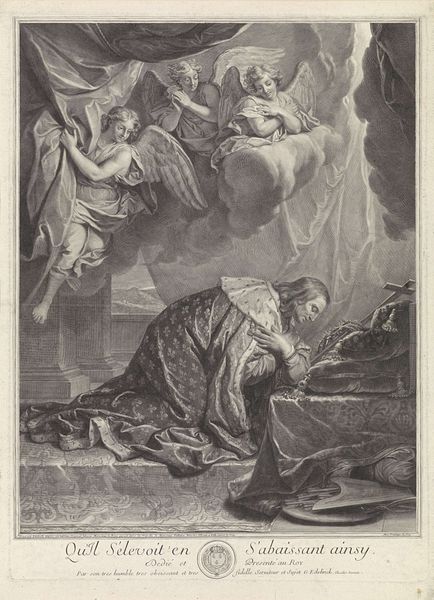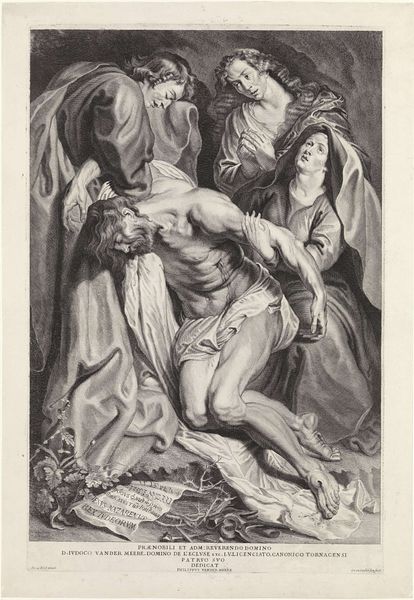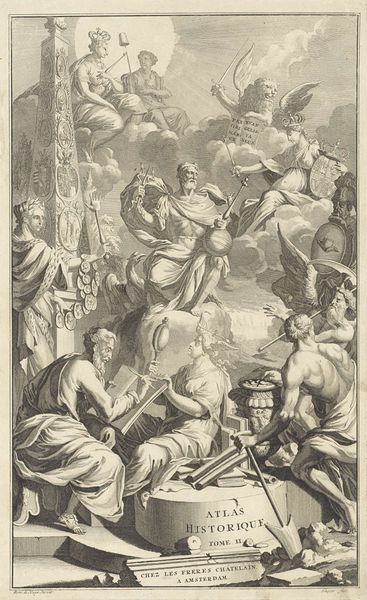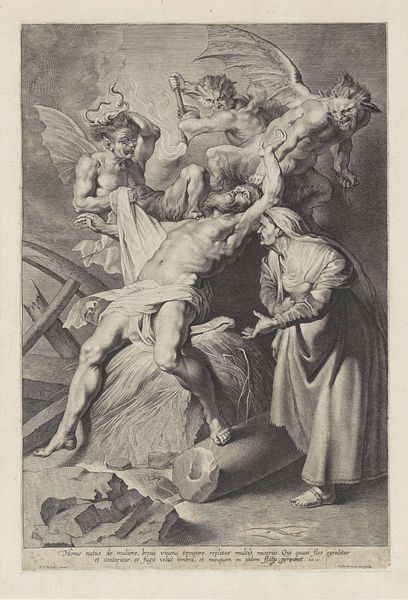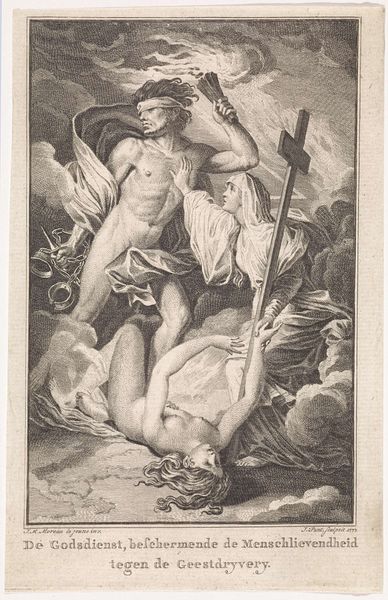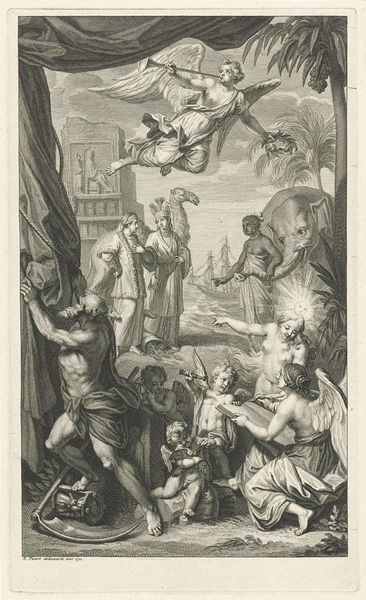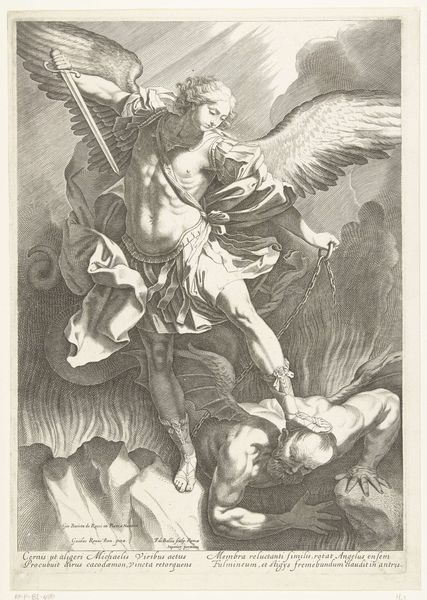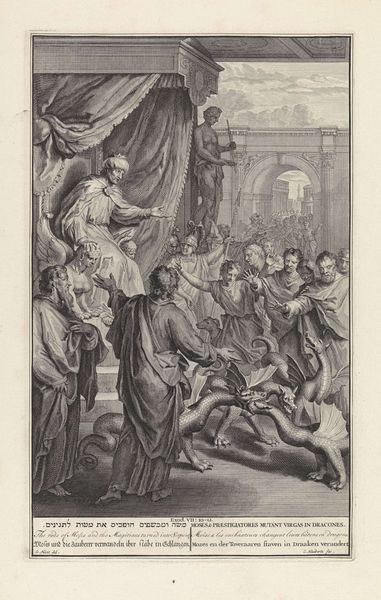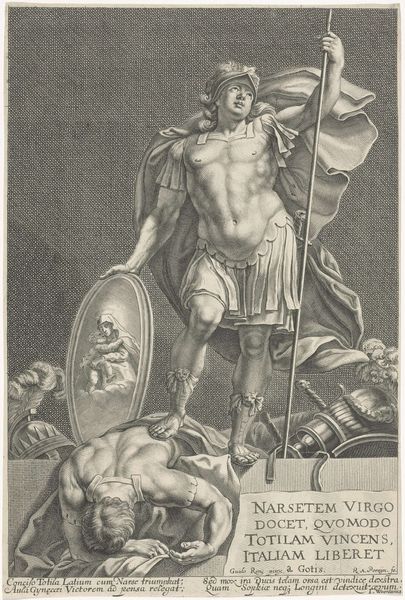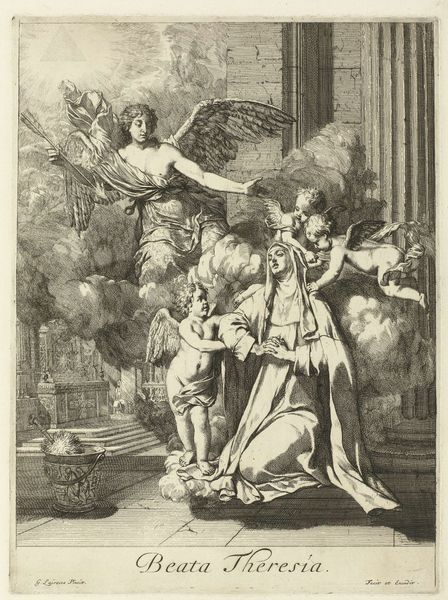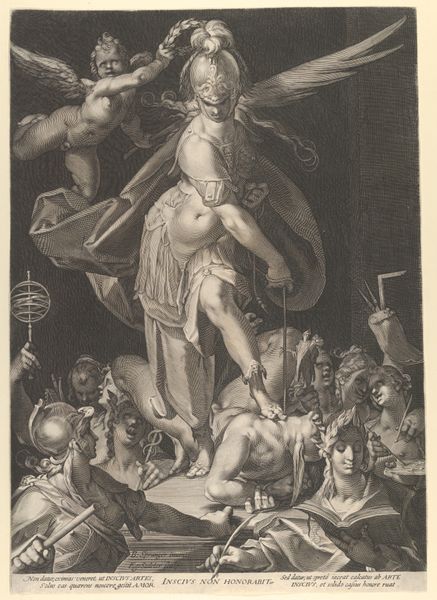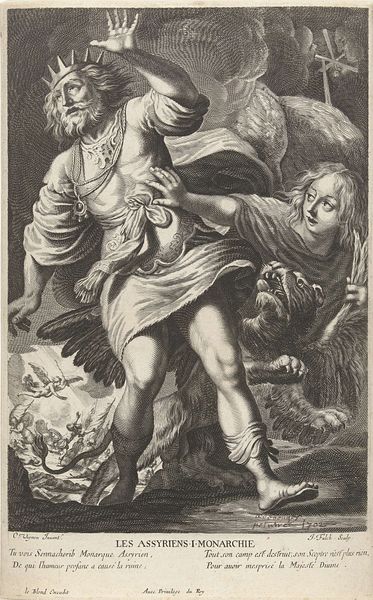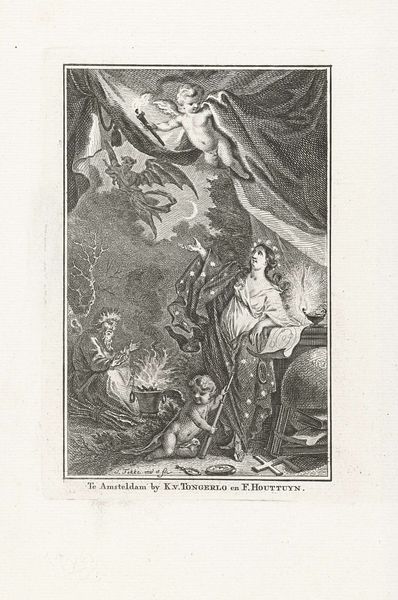
engraving
#
narrative-art
#
baroque
#
figuration
#
history-painting
#
engraving
#
christ
Dimensions: height 187 mm, width 115 mm
Copyright: Rijks Museum: Open Domain
Curator: At first glance, I'm struck by the raw emotion depicted here. It's a scene of dramatic tension, with the fallen figures contrasting sharply with the radiant central figure. Editor: Indeed. What we’re observing is an engraving titled "Opstanding van Christus" (Resurrection of Christ), an anonymous work dating roughly from 1655 to 1731 and currently held at the Rijksmuseum. It encapsulates a pivotal moment within Christian theology, made material through Baroque aesthetics. Curator: The symbolism is immediately potent. Christ's figure emerging from the tomb, surrounded by collapsing Roman soldiers, speaks volumes about the overturning of worldly power. The Romans, who epitomize temporal authority, are literally falling as Christ rises. Editor: Absolutely. But look closer: notice how the engraving leverages the chiaroscuro effect, popular during the Baroque era? Light symbolizes divinity, emerging in stark contrast against the shaded, chaotic backdrop of earthly affairs. It reflects the struggle for emancipation from secular structures. The bright Christ emerges while everything else fades into a historical backdrop of power structures in crisis. Curator: I think that interpretation aligns closely with how artists of the period employed light, contrasting Christ’s grace with humanity's perceived depravity. These sorts of images, mass-produced, held considerable socio-cultural capital, reinforcing certain interpretations and realities through powerful visual symbols and narratives. Editor: It is compelling how easily a tale of spiritual liberation also can mirror contemporary struggles for freedom across many oppressed communities. To whom and for whom is redemption made manifest in this representation, I wonder? Curator: It is the central question indeed! This is why symbols like Christ are constantly re-evaluated for what values we instill in them. And what meanings are assigned to figures representing past or future liberations? Editor: I come away feeling invigorated but still wondering about the unacknowledged biases inherent in representing narratives of power—who gets centered and what are their agendas? Curator: The enduring appeal, and indeed, the complexity, I think lies in the artwork's dual nature; it represents both religious certainty and a perpetual state of societal negotiation and reimagining.
Comments
No comments
Be the first to comment and join the conversation on the ultimate creative platform.
